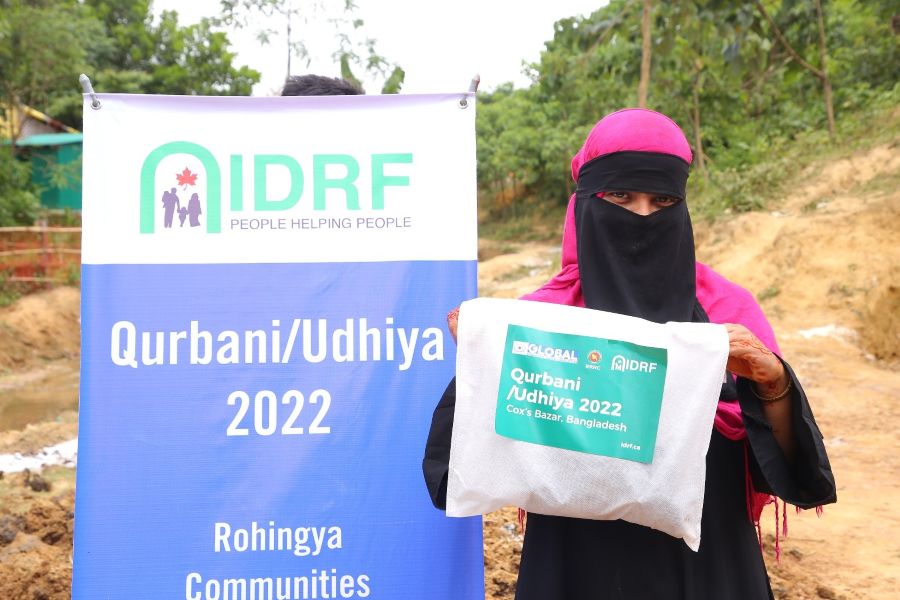
Case Study - IDRF - Qurbani Project 2022 – Rahima Khatun

Purpose of Case Studies |
Case studies are an excellent tool used in the monitoring and evaluation of a project. IDRF requires a minimum of two case study submissions per reporting period to highlight some of the unique experiences and stories of IDRF’s project beneficiaries. A case study is more than a simple reiteration of the services a beneficiary received under a specific project. A case study should tell a unique story of a beneficiary and should demonstrate the effectiveness and impact of a project in addressing specific challenges outlined in the project agreement. A case study should explain the short and long-term benefits a beneficiary received as a participant of an IDRF project. Overall, case studies involve looking at one experience in-depth and showing how this experience relates to the broader picture.
When structured, developed, and written correctly, a case study should engage the reader by clearly describing the situational context and the challenge(s) faced by a particular beneficiary. It highlights the importance of the current project and why there is a need for such programming. When shared through social media, case studies are extremely useful in raising awareness about specific global issues and encourage the reader to act and learn more about a project.
Developing Case Studies |
There are many ways to develop and structure a case study. For this project, a case study should be framed as a story having three main components: (1) a main character; in this case, the main character would be a project beneficiary, (2) a problem; this should include a description of the challenge(s) experienced by that beneficiary, and lastly (3) a solution; the solution should be a description of how that beneficiary’s participation in this project improved or mitigated the identified challenges.
Case Study Framework |
As previously stated, the purpose of a case study is to inform, engage and mobilize the reader to take action, learn more and remain engaged in the project and the work of the organizations involved. The purpose of this document is to provide a framework for all case study submissions ensuring consistency and compliance with IDRF reporting requirements.
Please note: Case study submissions are required at all scheduled reporting periods outlined on the payment and reporting schedule of the project agreement. Each case study should be accompanied by a minimum of two high-resolution, full-length JPEG photo attachments. Please DO NOT copy and paste pictures into this template as this affects the quality of the photos. Please complete the following framework by providing a minimum of two case studies per reporting period.
CASE STUDY 1 | |
Project Title | Qurbani Project for Rohingya and Vulnerable Host Population in Bangladesh. |
Country | Bangladesh |
Region(s) | Chattogram Division, Cox’s Bazar District, Ukhiya Upazila. |
Sector | Food Security and Nutrition, Religious Giving |
Project Beneficiary | Indicate the [name] and [age] of the beneficiary featured in this case study. Rahima Khatun (Female), age 27 years |
Challenges experienced by beneficiary | Describe the unique challenges faced by the beneficiary specific to the project sector. [Please include this information in point form]
|
Project impact | Describe the how this project improved or mitigated the challenges identified by the beneficiary. Please describe the short-term and long-term benefits of this project. [Please include this information in point form]
|
Completed Case Study (minimum of 2 paragraphs) | Insert the completed full-length case study.
Rahima Khatun (27) has been living in Camp 4 extension with her two daughters aged 8 years and 6 years once her husband brutally killed by the Myanmar Army. She and her children was lucky enough to escape and reach Bangladesh unlike many others. Losing only bread winner of her family, the lives of Rahima were filled with frustration. It was getting harder to live a life with two young children. Whereas basic food support is tough to meet, foods like cow meat is a luxury. WFP’s Basic Food Programme is the only source of basic commodities where rice, cooking oil and BDT 1200. During this Eid-Ul-Adha, her family got Qurbani meat from GUSS and IDRF although she never thought that someone would provide meat to her family. She became very happy as her daughters can eat meat at least during the Eid Day. This meat will provide essential nutrients to her little daughters. “What can I say? This meat brought joy to my family. Allah SWT will also help you”, emotionally said Rahima Khatun. |
Beneficiary Quotation #1 | Include a direct quotation from the beneficiary describing the unique challenges experienced by the beneficiary.
“What can I say! This meat brought joy to my family. “Allah SWT will also help you.” |
Beneficiary Quotation #2 | Include a direct quotation from the beneficiary describing the positive impact of the project in relation to the challenges described above. “I hope IDRF and GUSS will help us more in near future” |
Media | Provide a brief description of the case study pictures provided. Please ensure each case study is accompanied by a minimum of two pictures featuring the beneficiary participating in the project activities. The pictures were taken during distribution. Pictures are attached as Annex-6 |


